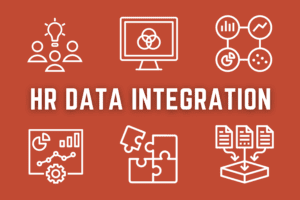Share
Running a successful dealership takes more than just moving inventory and filling service bays. It requires strategic, data-driven decision-making across every department—from sales and service to HR and finance. That’s where car dealership performance metrics come in.
By tracking the right metrics, dealerships can improve employee productivity, customer satisfaction, and overall profitability. This article explores which performance metrics matter most for dealerships, why they’re important, and how technology like Netchex can help track and improve them.
Why Performance Metrics Matter for Dealerships
Every dealership leader knows that what gets measured gets managed. Without clear performance benchmarks, it’s nearly impossible to spot issues, track progress, or drive continuous improvement.
Here’s why tracking performance metrics is essential:
- Identify underperforming departments or locations
- Recognize top-performing employees
- Optimize labor costs and productivity
- Improve customer satisfaction
- Reduce employee turnover
- Increase revenue per employee
Whether you’re managing a single rooftop or a multi-location dealership group, using dealership-focused HR and performance software makes it easier to collect, analyze, and act on performance data. For an overview of dealership-wide HR tools, check out our page on HR Software for Car Dealerships.
Essential Car Dealership Performance Metrics to Track
Dealership metrics vary by department, but here are the key performance indicators (KPIs) every dealership should monitor:
1. Sales Department Metrics
Sales performance metrics are critical for tracking revenue generation and individual sales consultant productivity.
Key sales metrics include:
- Units sold per salesperson
- Gross profit per vehicle
- Finance and insurance (F&I) penetration rates
- Sales closing ratio
- Customer satisfaction index (CSI) scores
By tracking these KPIs, dealership leaders can identify sales training needs and reward top performers.
2. Service Department Metrics
The service department is often the backbone of dealership profitability. Monitoring service metrics helps improve efficiency and customer retention.
Important service performance metrics include:
- Labor hours billed per technician
- Technician efficiency and productivity rates
- Work-in-process (WIP) cycle times
- Service advisor upsell ratios
- Comeback rate (percentage of vehicles returning for rework)
If you’re focused on growing your service team, our guides on How to Hire an Automotive Technician and Hiring Automotive Mechanics can help.
For roles like automotive painters, see our detailed article on Automotive Painter Hiring.
3. Employee Productivity and Engagement Metrics
Employee engagement directly impacts performance. Dealerships that track engagement and productivity KPIs can reduce turnover and boost output.
Key engagement metrics include:
- Employee turnover rate by department
- Absenteeism rate
- Average tenure
- Employee engagement survey scores
- Training completion rates
For more on improving dealership morale and retention, visit our page on Automotive Employee Engagement.
4. Labor Cost Metrics
Labor costs can eat into profitability if not carefully managed. Tracking labor performance metrics helps control costs while maintaining service quality.
Important labor cost KPIs include:
- Labor cost per hour
- Overtime hours and costs
- Cost per completed repair order (RO)
- Revenue per employee
Using scheduling software like Netchex’s Car Dealership Scheduling Software can help optimize staffing levels and reduce unnecessary overtime.
5. Recruitment and Hiring Metrics
Poor hiring processes can lead to high turnover and lower performance over time. Tracking recruitment metrics helps dealerships build stronger teams.
Key recruitment KPIs:
- Time-to-fill for open positions
- Offer acceptance rates
- First 90-day turnover rates
- Candidate source effectiveness
If your dealership is struggling with recruitment, our Automotive Recruitment resource offers actionable strategies for hiring across all dealership roles.
For compliance with federal and state hiring regulations, visit our Automotive HR Compliance page.
How to Use Dealership Performance Metrics for Decision-Making
Collecting performance metrics is just the first step. To drive real improvement, dealership leaders must analyze and act on the data.
Here’s how:
- Conduct monthly performance reviews by department
- Set benchmarks and goals for each KPI
- Share performance dashboards with managers
- Recognize and reward top performers
- Use data-driven insights for staffing and scheduling decisions
- Adjust compensation plans based on productivity and profitability
For real-time tracking and reporting, dealership-specific performance management tools like Netchex’s Automotive Performance Management can simplify the process.
Performance Metrics by Dealership Role: Tailoring KPIs to Each Position
Performance tracking should be role-specific. Here’s how to tailor KPIs:
- Sales Consultants: Track units sold, CSI scores, and upsell ratios
- Technicians: Measure labor hours billed, efficiency, and rework rates
- Painters: Monitor cycle time, material usage, and quality scores
- Service Advisors: Track upsells, customer satisfaction, and ROs written
- HR Staff: Focus on time-to-hire, turnover rates, and onboarding completion
Role-specific KPIs allow managers to provide meaningful feedback and set achievable performance goals.
Leveraging HR Technology to Track and Improve Performance Metrics
Trying to track performance metrics manually is time-consuming and prone to errors. Modern dealerships are investing in HR and performance management software that integrates:
- Payroll and time tracking
- Scheduling
- Recruitment and onboarding
- Compliance reporting
- Performance reviews
- Employee engagement surveys
An all-in-one solution like Netchex’s dealership HR platform helps bring all these data points together in one dashboard.
Tips for Improving Dealership Performance Metrics Over Time
Improving dealership performance isn’t about quick fixes. It requires ongoing measurement, employee feedback, and leadership commitment.
Here are a few best practices:
- Hold quarterly performance review meetings
- Provide training and coaching for underperformers
- Set department-specific performance goals
- Implement employee recognition programs
- Use real-time performance dashboards to spot issues early
For more insights on creating a high-performance dealership team, check out our full library of automotive HR resources.
Conclusion: Data-Driven Dealerships Perform Better
Tracking and managing car dealership performance metrics isn’t just about numbers—it’s about making informed decisions that drive profitability, employee engagement, and customer satisfaction.
By focusing on the right KPIs and using technology like Netchex to automate tracking and reporting, dealership leaders can turn raw data into actionable insights.
Ready to take control of your dealership’s performance?
Related articles

How data can help you make smarter HR decisions

Beyond Reporting: Empowering HR Professionals with Actionable Insights

HR Data Integration: Streamlining Data with HR Technology

